If you live in the Midwest, Indiana is prime mushroom hunting territory with over 2000 documented species. Some of the most popular picks include meadow mushrooms, chanterelles, shrimp of the woods, puffballs, inky caps and oyster mushrooms.
This means that depending upon the time of year, both dedicated and beginner mushroom hunters alike can find a bounty in the Hoosier state.
Of course, not all of these mushrooms are edible – some are quite poisonous.
Proper mushroom identification and knowing what to avoid is paramount for a rewarding mushroom foraging experience as well as a safe one.
What Are You Foraging For Right Now?
We're thrilled to hear your ideas. What would you like to submit today? Feel free to share your thoughts and experiences with us.
Also, check out our video on the 7 best tools to forage mushrooms.
Below you will find a list of the top 10 most desirable and edible mushrooms in Indiana and preparation ideas.
1. Meadow Mushroom (Agaricus campestris)
White or grayish in color with a smooth cap that measures 1-4 inches across. It’s commonly found in yards during the warmer months of July – September.
Meadow mushrooms are similar to button mushrooms found in grocery stores and make a reasonable and delicious substitute.
Try drying them or sautéing. Or, for something different, check out this recipe for meadow mushroom caramelized onion tarts.
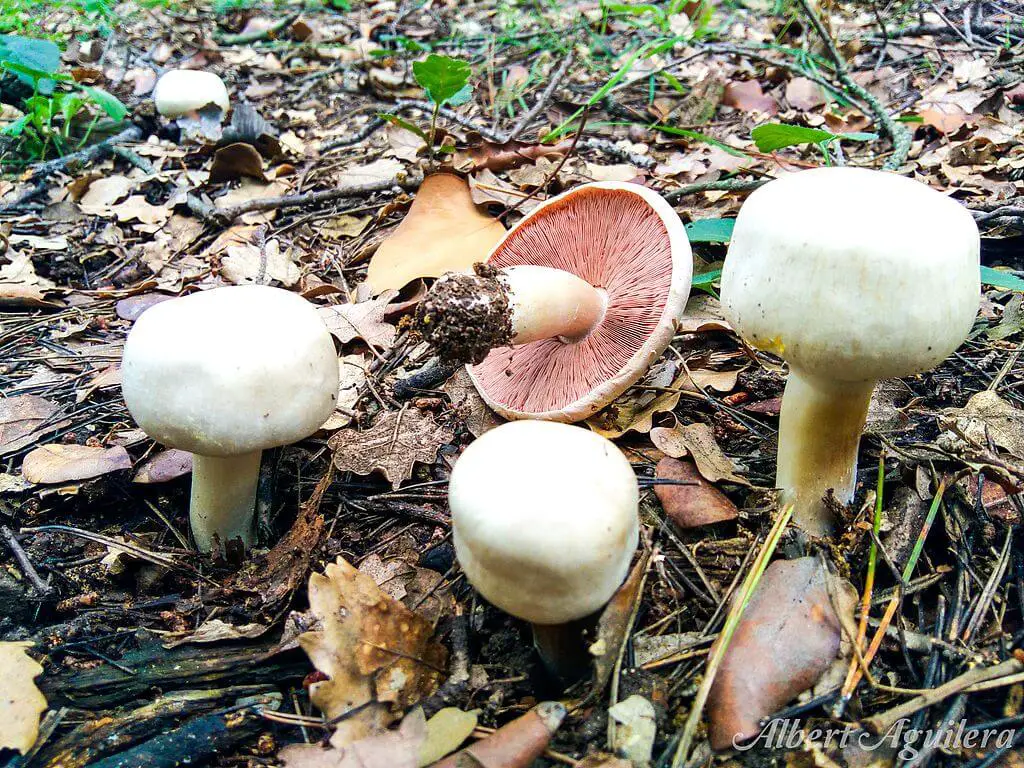
2. Shrimp of the woods (Entoloma abortivum)
Shrimp of the woods spout up from decaying wood near hardwood trees during mid to late fall. They are one of the most unusual-looking species of mushrooms, with some claiming they resemble oddballs of popcorn.
Its distinguishing feature is a grayish-brown cap that begins convex and then starts to roll in on itself as it grows. The result is an irregular-looking, off-center mushroom.
With their mild mushroomy flavor, shrimp of the woods make an interesting addition to any menu.
They can be breaded and fried, roasted, or try using in place of true shrimp in this recipe for honee garlic shrimp of the woods.

3. Chanterelle Mushrooms (Cantharellus)
Chantarelles are one of the most prized edible wild mushrooms in North America. They can be yellow, orange, or white and have notable wavy, funnel-shaped caps. Their hallmark feature, however, are their false gills that are forked and run down a tapered stipe.
These favored mushrooms are generally found during spring and summer near hardwoods or white pines.
One of the most elusive and highly desirable of the chantarelle family is the black trumpet, sometimes referred to as the horn of death. Although the name is intimidating, the earthy, smoky flavor makes this a superstar in the mushroom world.
From a culinary perspective, they have a peppery flavor that adds interest to many dishes. A quick search will net many different recipes for chantarelles, but for an elegant twist on breakfast, try this omelet with chanterelles.
Watch our video on when and where to look for chanterelles.
4. Bolete mushroom (Boletus edulis)
Bolete mushrooms, also known as penny bun, lack gills and have a smooth, slightly spongy underside.
They prefer moist, cool conditions and can be found in clusters at the base of stumps and near hardwood trees along the roots. They’re most abundant during the fall.
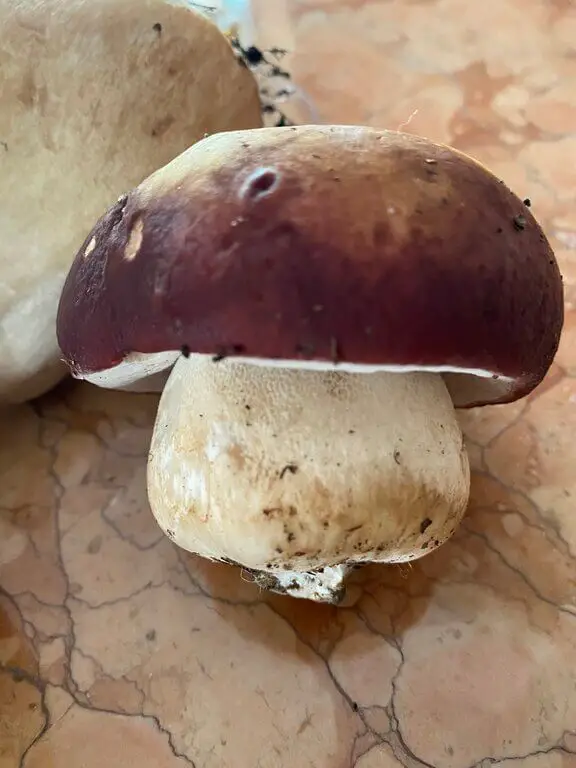
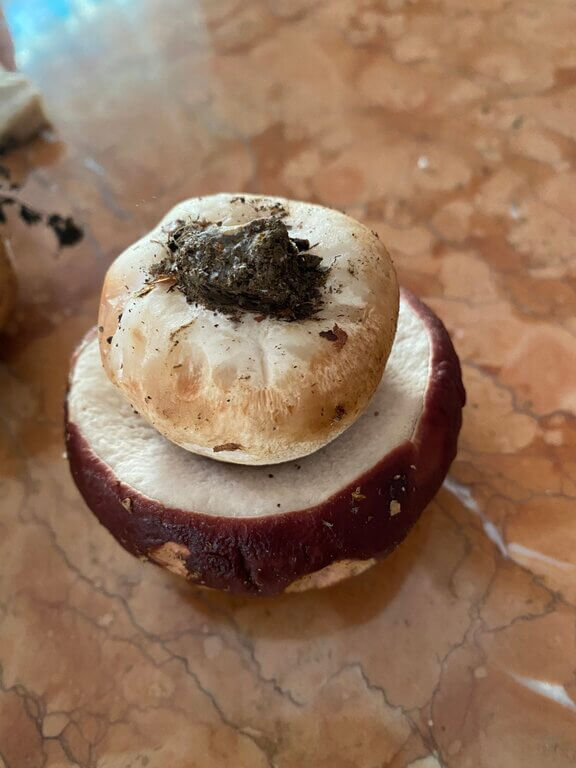
For proper identification, ensure your bolete does NOT turn blue when cut or have bright red or yellow pores. If these are present, you likely have an inedible cousin.
When comfortable with your identification, you have a number of culinary options. Try bringing a mushroom appetizer for your next gathering with this bicolor bolete mushroom pate’.
Watch our video on how to find,and identify king boletes (Boletus edulis)!
5. Puffballs (Lycoperdon perlatum Pers.)
Puffballs are one of the best mushrooms for new mushroom hunters because of their distinctive appearance. They look exactly like their name, i.e., a puffball.
Although unique in their appearance, they will need to be inspected closely to ensure what you have is a true puffball and not a poisonous imposter.
Common look-a-likes include the destroying angel and the death cap mushroom, a poisonous variety of Amanita.
Edible puffballs, including the giant puffball, which can grow up to one foot in diameter, will be found in meadows and forested areas on the ground – not on wood. They’re most prolific during late summer to early fall.
To be sure you’ve found a puffball and not an imposter, cut the mushroom in half. What you should see if it is a true puffball is solid white from top to bottom. No patterns, pits, or markings of any kind will be present.
When you are certain of your identification, you can add puffball mushrooms to everything from eggs to lasagna. Or try cream of giant puffball soup.
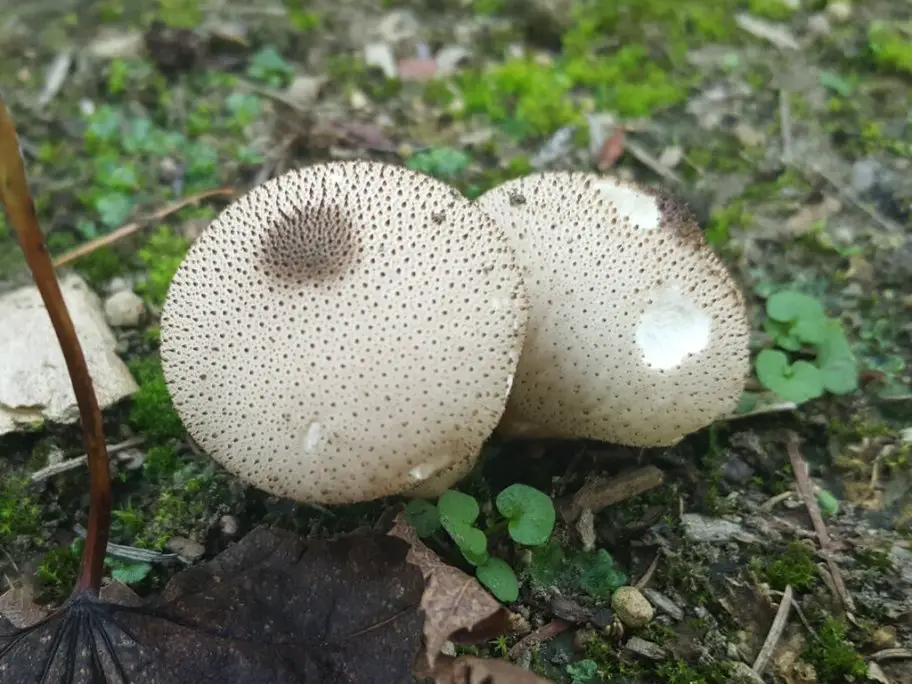
6. Morels (Morcella)
Morel mushrooms are part of a genus Morchella the species of which are considered true morels. They are highly sought after and considered a culinary prize by many gourmet cooks.
They are most easily identified by their porous honeycomb caps.
Mushroom hunters typically search for morels in the moist soils of forests, near stumps, or under fallen trees. Morels are also often found in areas where forest fires have done damage.
They are found for just a short span of time, normally a 3–4-week period during the spring.
Once found, there is a range of cooking options that make morels the star of the dish. A favorite comfort food dish is morel mushroom pasta In parmesan cream sauce.
Watch our video to learn all about how to find, forage, and identify morel mushrooms!
7. Inky Caps (Coprinopsis atramentaria)
Inky cap mushrooms, sometimes referred to as shaggy mane mushrooms, have a bell-shaped cap and a dark underside that will produce a nearly black spore print.
This wild mushroom has a short shelf life and will need to be consumed quickly once foraged. If not, a hydrolytic enzyme will effectively liquefy the mushroom within hours, turning it into an inky goo.
Look for inky cap mushrooms in disturbed ground, meadows, or grassland during late spring through fall.
Once found, you can use the mushrooms to make shaggy mane ink or shaggy mane mushroom waffles.

8. Oyster Mushroom (Pleurotus ostreatus)
Oyster mushrooms are a favorite find for foragers and foodies alike. They are often found year around if the area is moist and temperate.
Rather than looking down for them, you’ll need to look up as these mushrooms grow directly on trees. Although they prefer hardwoods, oyster mushrooms can occasionally be found on conifers as well.
Oyster mushrooms will have caps that are lobed or circular, and gills run along the stem.
Try teriyaki oyster mushroom steak for an easy vegetarian meal.
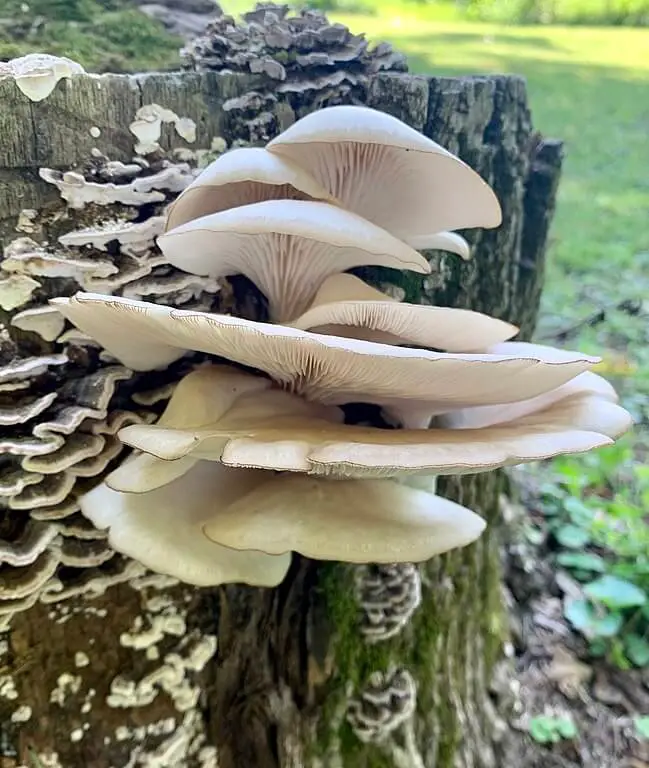
9. Chicken of the woods (Laetiporus sulphureus)
This is an easily identifiable mushroom, and as a bonus, it has very few look-a-likes. This makes chicken of the woods an excellent mushroom for beginning foragers to seek and collect.
Chicken of the woods grows in a semicircular form and has a wrinkled, suede-like texture. At first glance, it resembles something you might find in the ocean, but this yellow-orange edible fungus grows at the base of dying trees or dead conifer stumps.
Fruit bodies begin forming at the beginning of summer and continue through fall.
As its name implies, chicken of the woods has a chicken-like flavor and makes an excellent substitute for meat in vegetarian dishes.
Give chicken fried chicken of the woods a try as an alternative to the more traditional version.

10. Hen of the woods (Grifola frondosa)
Although it sounds like hen of the woods and chicken of the woods could be the same thing, they are not.
Hen of the woods is found growing in abundance during late summer into fall at the base of oak trees. Its clustered, semicircular shape gives an appearance similar to a head of lettuce.
These mushrooms can grow to be quite large, some weighing more than 30 pounds.
To truly appreciate the deep flavor of hen of the woods, try simply slicing and roasting or preparing it as a steak.
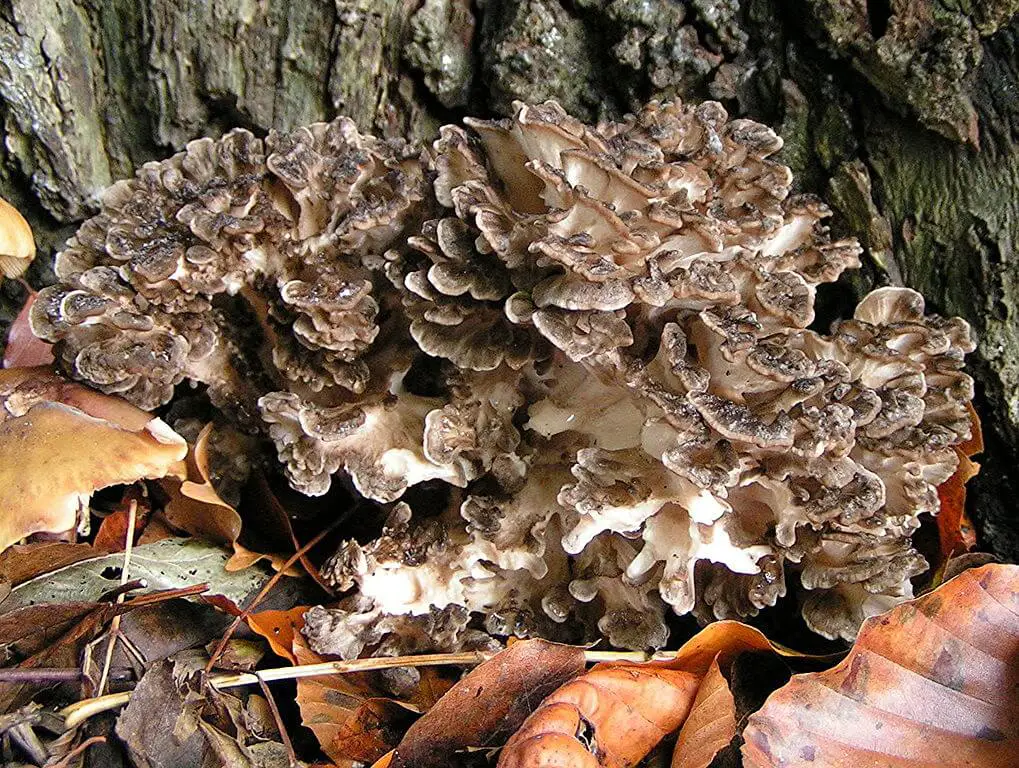
Poisonous mushrooms growing in Indiana
With so many edible Indiana mushrooms, it’s all too easy to become overzealous and make mistakes in your foraging. These mistakes can be costly to your health and send you to the emergency room if you’re not careful.
Many edible mushrooms have poisonous look-a-likes, so a proper field guide is a must when foraging for mushrooms or any other wild food.
Some of the most poisonous offenders in Indiana include:
Jack o’lantern mushroom (Omphalotus olearius): The Jack-o-lantern mushroom bears a striking resemblance to the coveted chantarelle. These mushrooms, however, will cause severe intestinal upset that can last for days.
Jack-o-lanterns will be a darker orange and have the unique characteristic of being bioluminescent.
False morels (Gyromitra esculenta): With morels being one of the gems of the mushroom world, false morels are a danger mushroom hunters need to be aware of.
As the name suggests, these mushrooms are easy to mistake for their coveted cousins.
A tell-tale sign of the false morel can be found when slicing through the mushroom from top to bottom. A false morel will not be hollow – a true morel will be.
Below, our video on the 7 most poisonous mushrooms growing in the US (mushroom details and ingestion symptoms included)!
Toxic amanitas: While there are some edible amanitas, they are also many that are toxic, including the deadly death cap and destroying angel.
Edible amanitas are not considered a prized mushroom or worth the risk of misidentification. It’s recommended that these amanitas be avoided in general.
Amanitas can be generally identified by the presence of pale gills, dry caps, and a universal veil that creates a volva.
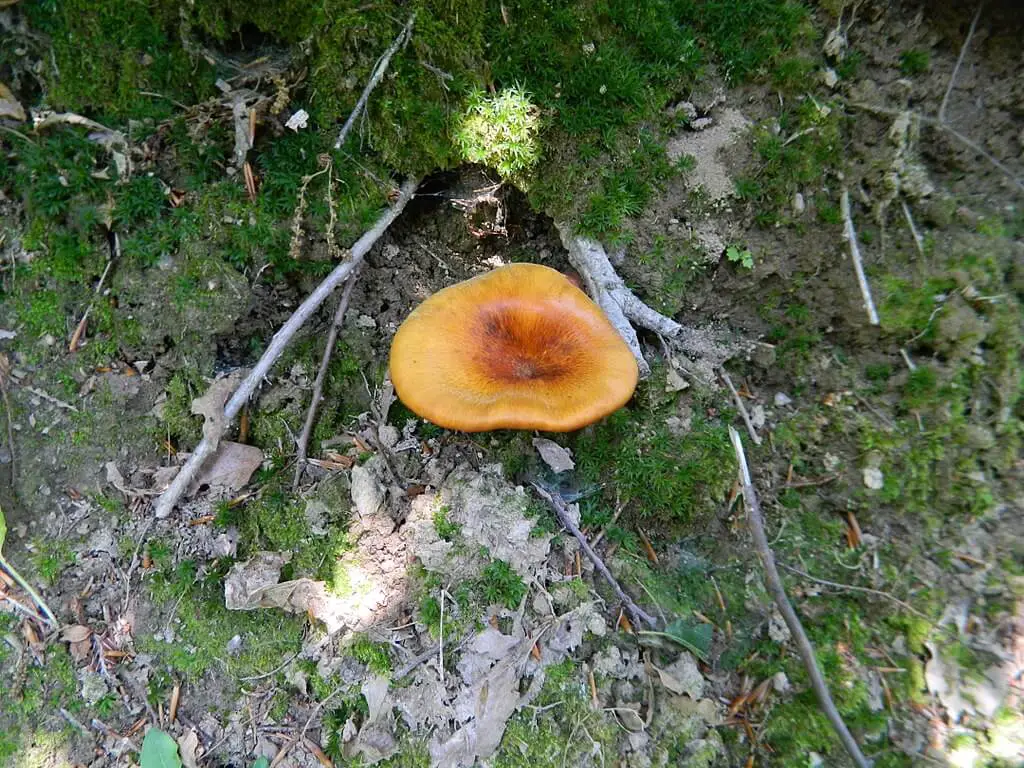
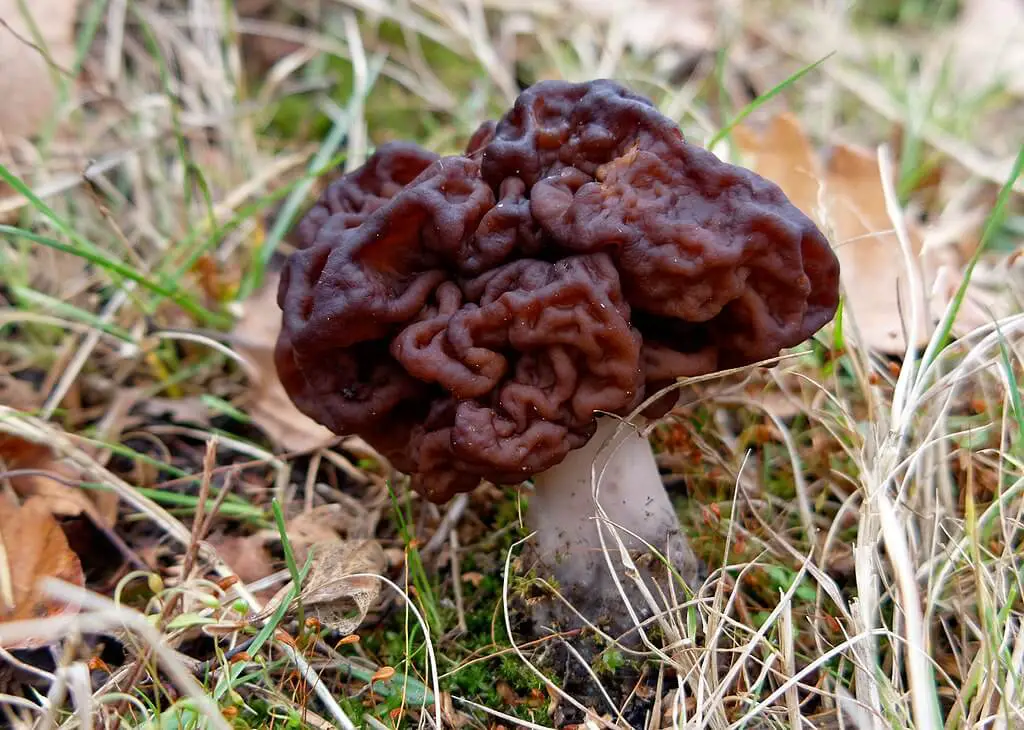
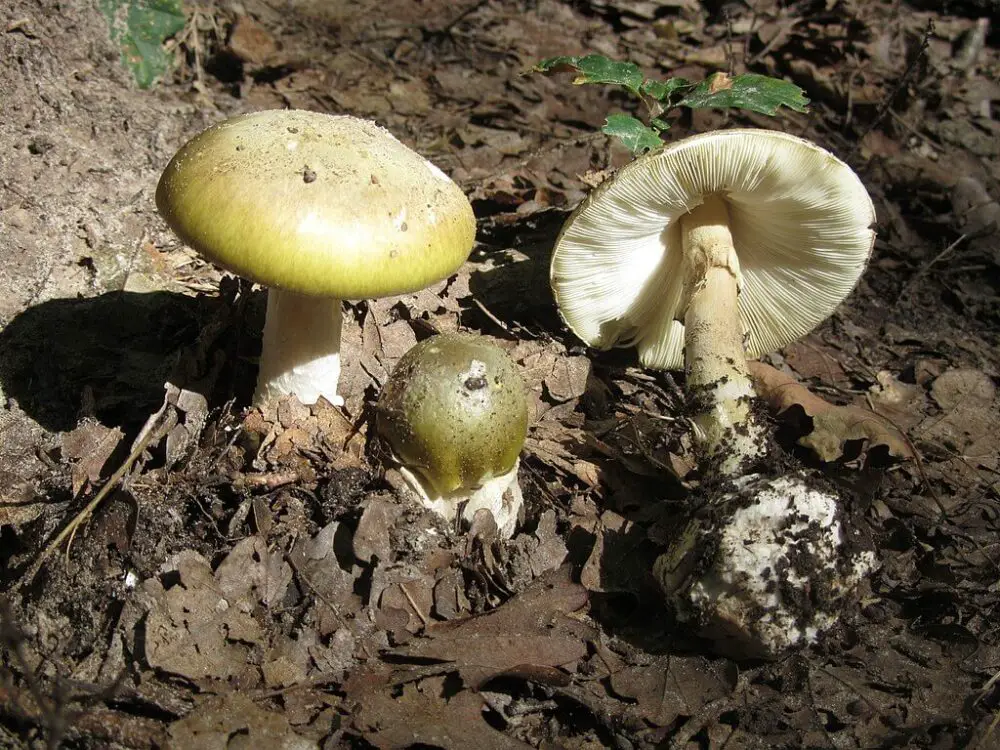
Additional information on Indiana mushrooms, along with identifying photographs, can be found at https://www.indianamushrooms.com/.
Lorin is a writer, photographer and nature enthusiast in Sacramento, CA. In addition to gardening, she makes a regular practice of forging for edible plants and flowers. Nature nourishes if you know where to look.

